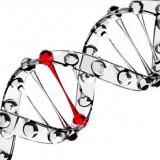Common Hereditary Eye Diseases
Many common diseases affecting vision can be passed on through genes. Approximately 60 percent of infant blindness is caused by inherited eye diseases. Some eye conditions may also manifest later in life, causing blindness or vision complications.
Types of Hereditary Eye Diseases
Hereditary eye conditions may vary widely in the way that patients’ vision, eyes, and health are affected. Some diseases may simply require simple treatments, while others may be life threatening and require surgeries. There may or may not be pain, depending on the condition and the severity.
Glaucoma
Glaucoma is one of the main causes of blindness in the United States. In patients with glaucoma, the fluid inside of the eye does not drain properly. This puts pressure on the eye, and can damage the fundamental structure of the eye. Glaucoma can cause pain and eventual blindness, especially if left untreated. Glaucoma can be acute or chronic, and may show no symptoms.
Color Blindness
About eight percent of males suffer from color blindness, whereas only about .5 percent of females suffer from the condition. The exact cause of color blindness is unknown, but the condition typically causes an inability to distinguish between certain colors. Color blindness does not cause other complications, but may inhibit a patient’s ability to perform certain jobs or tasks. There is currently no treatment for color blindness, although research efforts have shown effectiveness with animals in a lab setting.
Nystagmus
Involuntary, erratic movements of the eye characterize the condition known as nystagmus. The erratic movements may cause vision complications due to the patient’s inability to focus in one place, and may also cause the patient to suffer from nausea and dizziness. At this time, there is no effective treatment for nystagmus, but patients often learn to live with the disorder and minimize the visual impairment by moving the head in certain ways.
Albinism
Albinism causes patients to be born with less pigmentation in certain areas of the body, and the eyes are often affected. The retina may be improperly developed, and the iris is often white or pinkish, inhibiting the ability to properly block light from the pupil. Nystagmus is often a secondary complication in albinism. Lenses may be worn to help block out light, but other aspects of the disease have not been effectively treated at this time.
Macular Degeneration
Degeneration of the macula can be sudden or gradual. The macula is the part of the retina that helps form the center of images that are seen, so peripheral vision may not be affected in some cases. Macular degeneration can cause eventual blindness. In some cases, surgery may help to reverse the effects of the disease.
Retinoblastoma
Retinoblastoma is a type of cancer that develops in the retina in children. Retinoblastoma is life-threatening. Treatment for retinoblastoma may include surgery to remove all or a portion of the eyes, chemotherapy, and radiation therapy. Blindness may result from either the disease or the treatment.
Early Diagnosis of Eye Diseases
It is important for patients to inform physicians of any family history of eye diseases in order to aid early detection. In some cases, genetic testing or certain screening methods may help to catch diseases in early stages before symptoms are present. Early treatment may help to prevent diseases from developing or progressing. While not all hereditary eye diseases can be prevented, knowing that there is a high risk of developing certain conditions can help patients to avoid behaviors that may be conducive to the development of the diseases and can allow physicians to take steps to prevent the disease or mitigate its effects.
Sources:
http://my.clevelandclinic.org/disorders/inherited_eye_disease/default.aspx
https://nfb.org/images/nfb/publications/books/books1/ifblnd10.htm

















